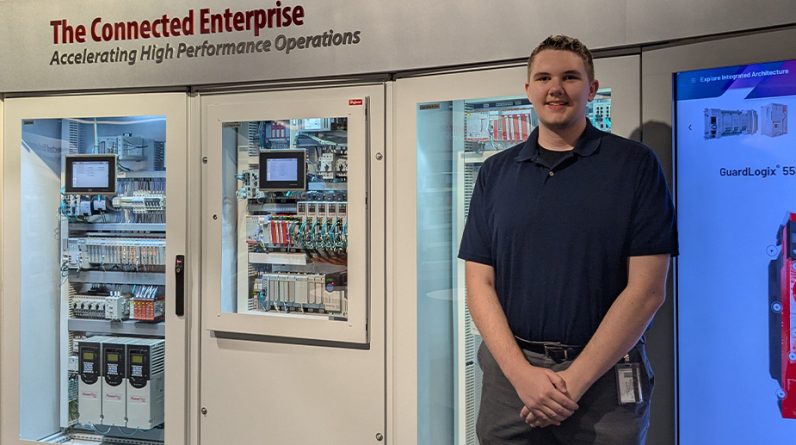
8Flow, which develops enterprise workflow mapping technology that uses AI to clearly show how processes interact with each other and with data across multiple workflow platforms such as ServiceNow and Okta, just closed a $10 million round of funding, which included those two companies as strategic investors.
Enterprise workflow mapping technology developer 8Flow Thursday unveiled the close of its Series A funding round. That round, worth $10 million, brings total funding in the company to $16.6 million.
In the three years since 8Flow was founded, the company has built and honed technology that can map enterprise workflows in detail across multiple platforms and applications, said Boaz Hecht, CEO and co-founder of the San Mateo, Calif.-based company.
The goal, Hecht told CRN, was to provide the context that AI agents need to fully automate an entire process.
[Related: ServiceNowâs New Yokohama Release: Focus On Agentic AI, Automation]
âWe basically decided to build something along the lines of Waze for enterprises,â he said. âThink of it as an agent, not a virtual agent but like an installable agent that you deploy across your support teams and computers. It watches how they resolve every case, and as it watches, it generates micro workflows to understand how you resolve a refund request, for instance. You look up the order, you look up the payment, you process a refund, you send back a message to the customer. Each of those are micro workflows. Which system did you use? Which ServiceNow instance or Salesforce instance? You probably have five or 10 per company. We map that out.â
Hecht (pictured above) and his team have a lot of experience in the ServiceNow space. They previously founded SkyGiraffe, which developed tools that businesses use to quickly develop and deploy mobile applications that tie into a companyâs back-end IT systems. That company was acquired by ServiceNow to become the ServiceNow Mobile Platform.
Indeed, ServiceNow, along with fellow workflow specialist Okta, are among the investors in this new round of funding. Other investors include Caffeinated Capital, HNVR, Liquid2, FirsthandVC, and strategic angels.
8Flow is working to simplify the complex mapping of enterprise workflows to help improve AI-based enterprise automation. For more on what 8Flow does, read CRNâs entire discussion with Hecht, which has been lightly edited for clarity.

Define 8Flow.
8Flow started about three years ago, basically after I left ServiceNow where I ran much of the platform for about five years. Before that, ServiceNow acquired my company SkyGiraffe, which is basically what is now ServiceNow Mobile, and I ended up running all the conversational stuff at ServiceNow, all the UI (user interface), web, mobile, chat, voice, everything. And I thought the market was moving to have agents resolve things in the case management verticals. But for them to work, you need the context of your company. For example, I can say, âChatGPT is going to start writing stuff for me.â It doesnât. It doesnât know what I need to write, what the tone is, what the topic is, all the details. It can write, but Iâm going to have to interact with it and give it the context. In enterprise workflows, you need that same understanding of context to be able to give the AI reasoning engine the actual information in context. We basically decided to build something along the lines of Waze for enterprises. Think of it as an agent, not a virtual agent but like an installable agent that you deploy across your support teams and computers. It watches how they resolve every case, and as it watches, it generates micro workflows to understand how you resolve a refund request, for instance. You look up the order, you look up the payment, you process a refund, you send back a message to the customer. Each of those are micro workflows. Which system did you use? Which ServiceNow instance or Salesforce instance? You probably have five or ten per company. We map that out. And then when you have an AI agent running the process itself, we would be the Waze equivalent, the mapping for them, giving them the route or the alternative routes they could use.
Why the name â8Flow?â
Literally, we like the number eight. Itâs like a lucky number. If you spin it to its side, it almost looks like infinity. We deal with lots of different workflows, almost infinite workflows. Okay, itâs more of a reverse-engineered naming than anything. We just liked the name. My last company was called SkyGiraffe, so we had to go slightly odd.
When was 8Flow founded?
Three years ago. We raised a $6.6-million round two and a half years ago. We still had most of it in the bank when we raised the new $10-million round. This is an interesting market. So I spoke to Ray (Raymond Tonsing, managing partner of Caffeinated Capital), whoâs our lead investor from our first round, and he said, âLook, Iâm gonna double down. Letâs do this again.â Weâve had a really great relationship for many years. [And] we added ServiceNow and Okta, who are strategic partners of ours.

What do you plan to do with the funds?
We have approached the market in almost like a backwards way compared to everyone else. Everyone in the last two or three years has been investing massive capital in building foundation models based on hypothetical information. We approach it from the other way. We did it a little bit like how Tesla built cars and sold them with a bunch of cameras on them and said, âWeâre going to sell them. Theyâre going to be globally deployed, and then weâre going to watch how people drive so we can get that data and learn from it.â And as the technology or AI improves, we can basically run neural networks locally on the edge.
Our first two years was basically us building the pipeline, building the mechanism to collect the data, structure it, analyze it, and be able to unravel those workflows. And now weâre adding the, if you like, AI part of it, which effectively understands the context of it and is able to pretty much scale the amount of adoption that you can have of Salesforce Agentforce or ServiceNow AI agents. Right now, if youâre a ServiceNow or Salesforce customer or whatever, you donât know which agents to build. You donât know how to build them, because theyâre so nuanced to the specific team thatâs doing whatever theyâre doing. We give you that mapping. We can say, âOK, this is the type of cases you resolve. Hereâs how you do it.â And weâre basically getting to a point where we can create the prompt for you, create the prompt itself that would generate the Agentforce agents or the ServiceNow agents or whatever. You could use your own Llama in whatever it is youâre building. You may be building with Accenture or Deloitte or whoever, but you still need to know what the user build is. And so weâre building the pipeline that comes from what it is youâre doing all the way to the agents and giving them the instructions to do it.
Is this specific to Salesforce or ServiceNow?
Itâs ServiceNow, [Salesforce] Service Cloud, Zendesk, pretty much the case management systems.

What role does AI play in what 8Flow is doing?
Quite a bit. It depends on which part. The data collection is not AI. But once itâs collected, we use different machine learning and AI to effectively build a pipeline that identifies all the workflows that happen. Some of that is LLM, some of it is just classic machine learning or graph databases or whatever. But think of it like Tesla watching how people drive from all the cameras around 1,000 cars. Now you take that in and say, âOK, how do I structure it to get the metadata? What is a right turn?â So you did 1,000 right turns. Some of them had a pavement. Some of them didnât. Some had a crossing or a four-way stop sign. It could be Iâm allowed to turn right on red, or Iâm not allowed to.
All of that context is similar to what happens in an enterprise. I use a ServiceNow instance. The ServiceNow instance has some added customization. It has an iframe (inline frame HTML element) in it. When I go into the iframe, I then go to a different cloud and do whatever it is Iâm doing. Say youâre filling in a form. There are 1,000 different form types. To fill in the form, where are you taking that data? Some of that we want to augment with LLMs. We want to interpret what the form is. Some of it we want to use graph databases to see how many times has this happened. And then we clean out the noise. Thatâs all on the backend.
And then thereâs the actual automations with Amazon Nova Act or Claude Computer or browser-based, any of the web automation tools that exist. We see ourselves, and always have, as the brains that tell you what it needs to do. We are not the ones who are going to do it. So weâve been waiting for those automation tools to come out, which is why weâre announcing now, because in the last three or four months, Operator came out from OpenAI, Nova Act from AWS, Claude Computer, all the web automations have now reached a point where they actually work. And so if Iâm an enterprise and want to adopt them, I need to know what I need to actually automate. How do we then build the prompts to be able to generate the automations according to the right infrastructure.

Does 8Flow target specific use cases? Are they customized for particular workloads, or do you produce this type of flow for general workflows?
Think of it as case management, which primarily is customer and IT support, but that spans quite a bit of back office asynchronous tasks. So historically, you would have contact centers where somebody calls in and you have to resolve the case. A lot of that is moving to asynchronous, some in chats. You get the message, you can send back or email or whatever, and then you basically have a team of people who are resolving cases but not doing it while on the phone with the customer. There may be no way of actually understanding what happened because there are no logs like, âHey, Iâm now updating your thing.â Thereâs no way of understanding how it was done.
We give that visibility, the observability of who does what, how they do it, how, say, a refund request gets resolved. Maybe the average is 10 minutes to handle this, but my top NPS score person takes eight minutes while my bottom one takes 14 minutes. Which part of that flow expands most on the slow ones? Why? What happens? Is it a knowledge base article? Is it some agent that wasnât trained? We basically analyze live agents. Weâve seen the more veteran agents donât go look up the case. They know how to do it. And so if a knowledge base is wrong, it actually only affects the new agents because theyâre reading the knowledge base to resolve it, and theyâre being misinformed. Whereas the veteran agents donât actually read it, so they do it correctly. The loss of time comes from agents being misinformed. Itâs very nuanced. And in every companyâs case, their knowledge bases are always out of date. Their SOPs (standard operating procedures) are out of date. Which ones are out of date? How do you know? All of that stuff is very important when you move from existing non-automation to automation.
So in the example that you gave about refund processing, do you do this on a case-by-case basis? In other words, each companyâs refund processing may be different.
If youâre an enterprise, you may have built 15 different business applications that are custom, that are homegrown, that have evolved over the last 10 years. Your refund request goes from Service Cloud to four different internal systems that youâve built over the last 10 years. Each company is different. Your industry is different. Letâs say youâre in hospitality. You might be using the same two systems, but theyâre so customized, theyâre so different. Whatever the scenario is, itâs very much kind of nuanced to the customer. IT is a lot more uniform. Everyone has their ServiceNow. Everyone has Okta and their other SSOs (single sign-ons). Those are much more uniform. But the process is still different because you have compliance, different geographies, different support methods.
The main part of AI migration is really moving from a human resolving a case start to finish, which is sequential, whereas AI can do it in parallel. Think of doing a password reset. My first step is to look at the ticket in ServiceNow. I then go to Workday and look up your profile and see that you are still active before Iâm allowed to reset your password, because thatâs a compliance thing. Then I go to Okta and reset your password. And then I go to ServiceNow to tell you Iâve reset your password. Thatâs four different systems, four steps. The second step today needs to be done by you as a human, but it doesnât need to be. It could be done by an LLM that looks you up on Workday, does the screenshot of the page, and dumps it into a directory, while another LLM reads all the screenshots that were done today for all the reset passwords. And so when I as an agent go to resolve the password reset because I need to manually do it because thatâs the compliance requirement, I already have a green check that an LLM has checked that that employee is still active on Workday. And so now you resolve part of it asynchronously, but youâre basically rethinking the process. Itâs like the routes that you take when driving
What sales channels do you use?
We do direct. We just started partnering with some of the very large systems integrators, which basically allows them to do time and motion studies. This is almost like AI-driven time and motion studies on steroids. You can do a scaled backlog of what needs to be automated. And so those are really our future partners, which is what weâre starting now.
Is 8Flow close to profitable yet?
No. Weâre an early-stage startup. Weâre starting to have revenue, but weâre not close to profitable.
Anything else we need to know about 8Flow?
Weâre hiring, like everyone else. The founding team has been together for 11 years. We worked together in my last startup and in ServiceNow. Itâs cool to do it together with ServiceNow and partners that weâve worked with before. Itâs a cool group of people, and we like what we do.





